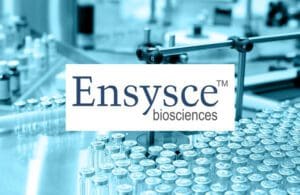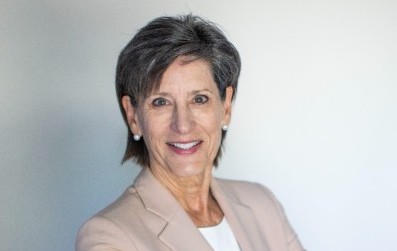 Lynn Kirkpatrick, the CEO of Ensysce Biosciences (La Jolla, California), oversees the development of novel medicines to reduce or eliminate prescription drug abuse.
Lynn Kirkpatrick, the CEO of Ensysce Biosciences (La Jolla, California), oversees the development of novel medicines to reduce or eliminate prescription drug abuse.
Its oxycodone prodrug candidate PF614 is now in a Phase 2 clinical trial. It is designed to offer similar pain relief as current prescription opioids with a limited risk of drug abuse and addiction.
Kirkpatrick has helped the company win FDA’s Fast Track designation for PF614.
She became President and CEO of Ensysce Biosciences Inc. in January 2009.
In the following interview, Kirkpatrick provides an overview of the company’s approach to combat opioid abuse and offers advice on how to succeed in the pharmaceutical industry.
Could you provide an overview of your background and what led you to Ensysce?

Lynn Kirkpatrick
Kirkpatrick: My background started in pharmacy, then medicinal chemistry and pharmacology. I started in academia and then started my first company in the 1990s. The company took three drugs into the clinic. That company, ProlX Pharmaceuticals, was acquired. It went from private to public.
In 2009, I started working with Ensysce, which was then based in Houston. We had an oncology focus. Fast forward a little bit, and we acquired the technology we have now.
We used that technology to develop new pain products. The assets were clinic ready at the time, and, being a chemist, the chemistry is so fascinating.
How would you describe Ensysce’s pipeline?
Kirkpatrick: TAAP and MPAR are acronyms for our two chemical platforms. It’s a chemical modification of either new drugs or existing drugs.
TAAP provides a prodrug approach to be able to deliver a product orally. It must be swallowed and go into the gut, where it’s activated. We can apply it to opioids, drugs for opioid use disorder and ADHD products. It can be applied to any drug that may require some improvement in oral drug delivery.
It’s a novel method for making a drug orally available without being able to manipulate it outside the body.
MPAR is a combination product. It is a combination of TAAP opioids with an inhibitor of the first step of activation. MPAR can be applied to all of our opioids, our ADHD products, as well as anything else we apply the TAAP chemistry to.
Looking into our pipeline, the focus is on the opioid crisis. We have a number of opioids that we’ve designed with the TAAP chemistry.
Our lead product is an oxycodone product to go head to head with OxyContin. So that’s what we’re currently evaluating with PF614.
We have eight other opioid products. Our combination products give us overdose protection. MPAR also has that extra safety layer with the activation process inhibitor. It offers improved oral delivery, reduced abuse potential and overdose protection.
Can you share more on how your drug candidates can avoid tampering of opioids?
Kirkpatrick: You never know whether people will attempt to abuse a drug until it gets onto the market. For those in pain, we believe we’re providing a safer product for severe or chronic pain, which the opioids are designed for. And some people are hesitant to take opioid products now if they have some indication that may require pain medication. And physicians are also reluctant to prescribe. So we believe once we reach the market, we may alleviate some of that hesitancy to take or prescribe something that is needed in certain cases.
What is your sense of the factors that led to where we are today with the opioid epidemic?
Kirkpatrick: Opioids have been used for over 3000 years.
In the U.S., a combination of marketing and a push to control pain pushed the situation into the crisis that we have today. Of course, that doesn’t mean there isn’t drug abuse of opioids in other countries, but it certainly hasn’t been magnified at the same pace it has in the United States.
I don’t want to point fingers, but it’s a combination of marketing, over-prescribing and socioeconomic issues. And people ignored the problem as it was starting, so it grew to the point we see today.
The attempt at the time was to provide opioids in a formulation designed to be delivered slowly over time. Unfortunately, people were able to overcome that formulation and make that drug available instantly to feed their cravings. Several companies tried to improve this through various means, including abuse-deterrent formulations over the last couple of decades.
But obviously, that hasn’t solved the problem, and that’s why we are taking a chemical approach to opioids because it’s different from the formulated products. Our chemistry is difficult to overcome. That doesn’t say it’s impossible. There will be attempts. But from our studies, we demonstrated that it’s very difficult to achieve that instant gratification that you can with some of the formulated products.
What kind of patent protection does Ensysce have?
Kirkpatrick: We have an extensive patent portfolio covering the chemistry, delivery and the combination with the trypsin inhibitor to give overdose protection, not only for opioids but other products with similar functionality.
The key aspect of the TAAP technology is trypsin. The T stands for trypsin. If we’re going to get into the weeds here, trypsin is an enzyme that everybody has to digest their protein products. It’s excreted into the small intestine. That’s why you have to swallow our products, and exposure to trypsin starts the activation, then there’s a second step and release of the opioid. For our MPAR products, we’re adding a small amount of a trypsin inhibitor, which sounds a bit counterintuitive.
If you take one or two pills of your prescription, there is such a small amount of the inhibitor that your opioid is released as it should be. If a person has forgotten they’ve taken a medication, that could potentially lead to a potential overdose situation. Or suppose you intentionally tried to take too many. In that case, the more you take, the larger amount of the inhibitor is there to block the activation so that the material passes out of the body without releasing the opioid. So that is the MPAR technology, making our TAAP products safer.
Suppose you have something in the medicine cabinet where children are in the house. The MPAR technology, we believe, can ultimately save lives.
As a female CEO in the pharmaceutical industry, I was wondering if you had any advice for other women aspiring to senior roles?
Kirkpatrick: My ability to multitask and my background have helped make me successful. I have a background in chemistry, pharmacology and toxicology. So I have a breadth of knowledge — maybe I know a little bit about a lot of things. But that has allowed me to be able to understand direction as well as multitask successfully at a small company.
The other strength I’ve had is being able to identify talent and surround myself with individuals who have worked in the same system and successfully move programs forward in a way that you couldn’t do in a larger organization. I understand where I don’t know what I am doing. So, I find those people that are good in those areas. And I think the advice is that you must recognize when you don’t know something and also be able to multitask — especially in smaller biotech companies like Ensysce.